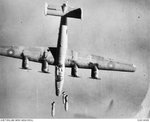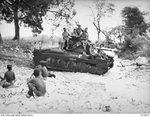yulzari
Tech Sergeant
Bison concrete mobile pillbox. Over 200 were made and issued.

There was also a variation of the theme using asphalt and pebbles between wooden boards as armour.
There was also a variation of the theme using asphalt and pebbles between wooden boards as armour.


